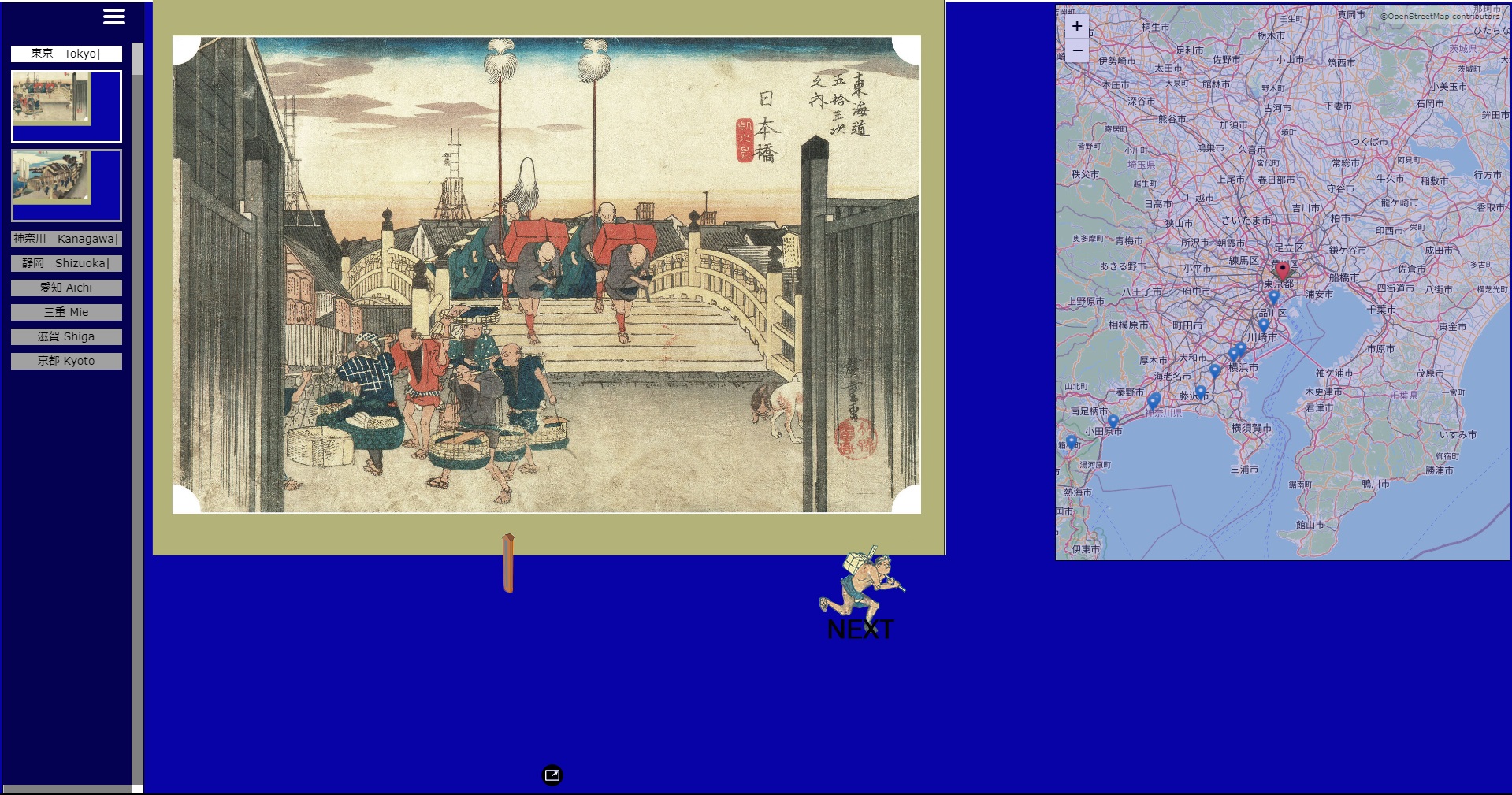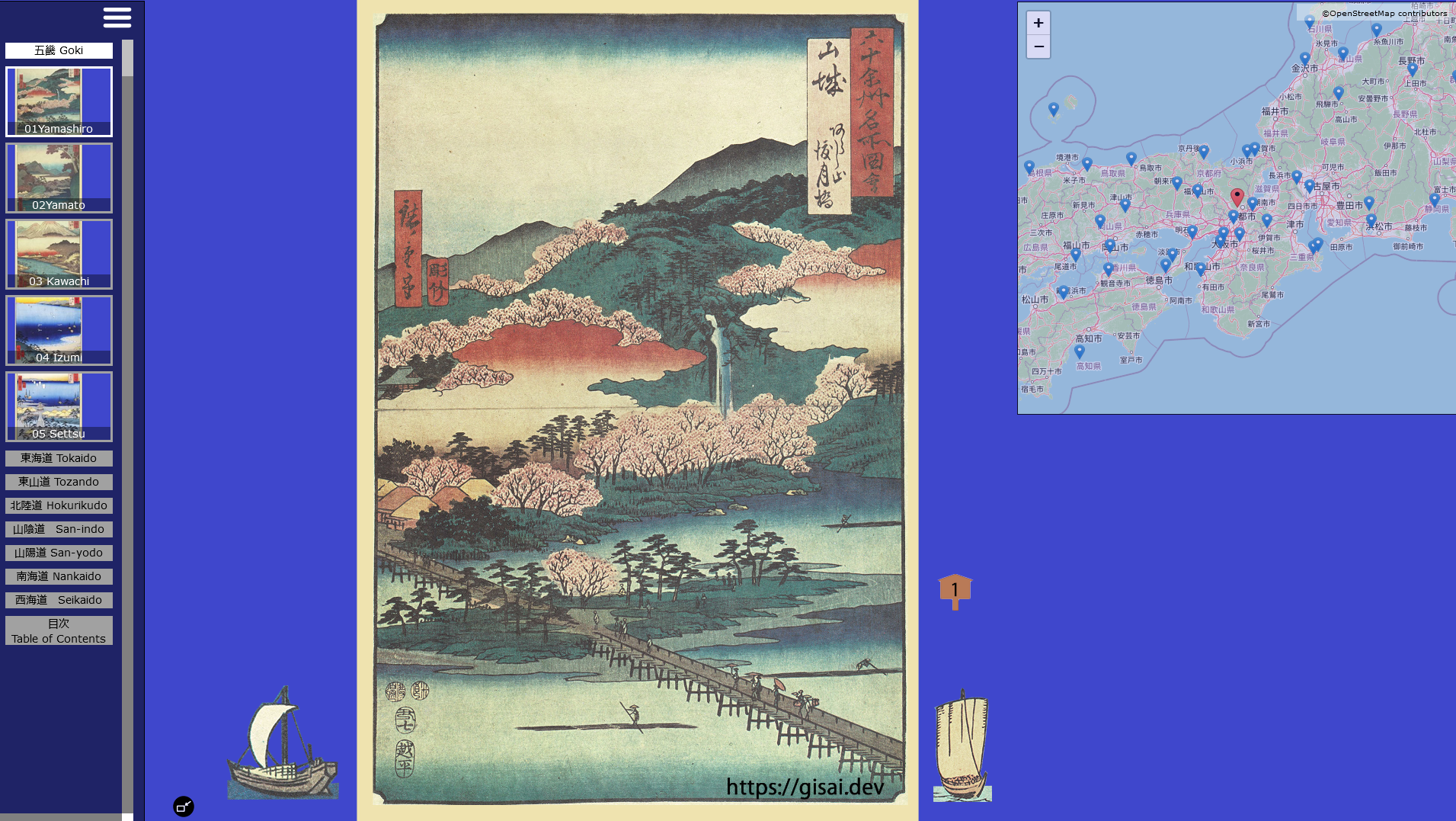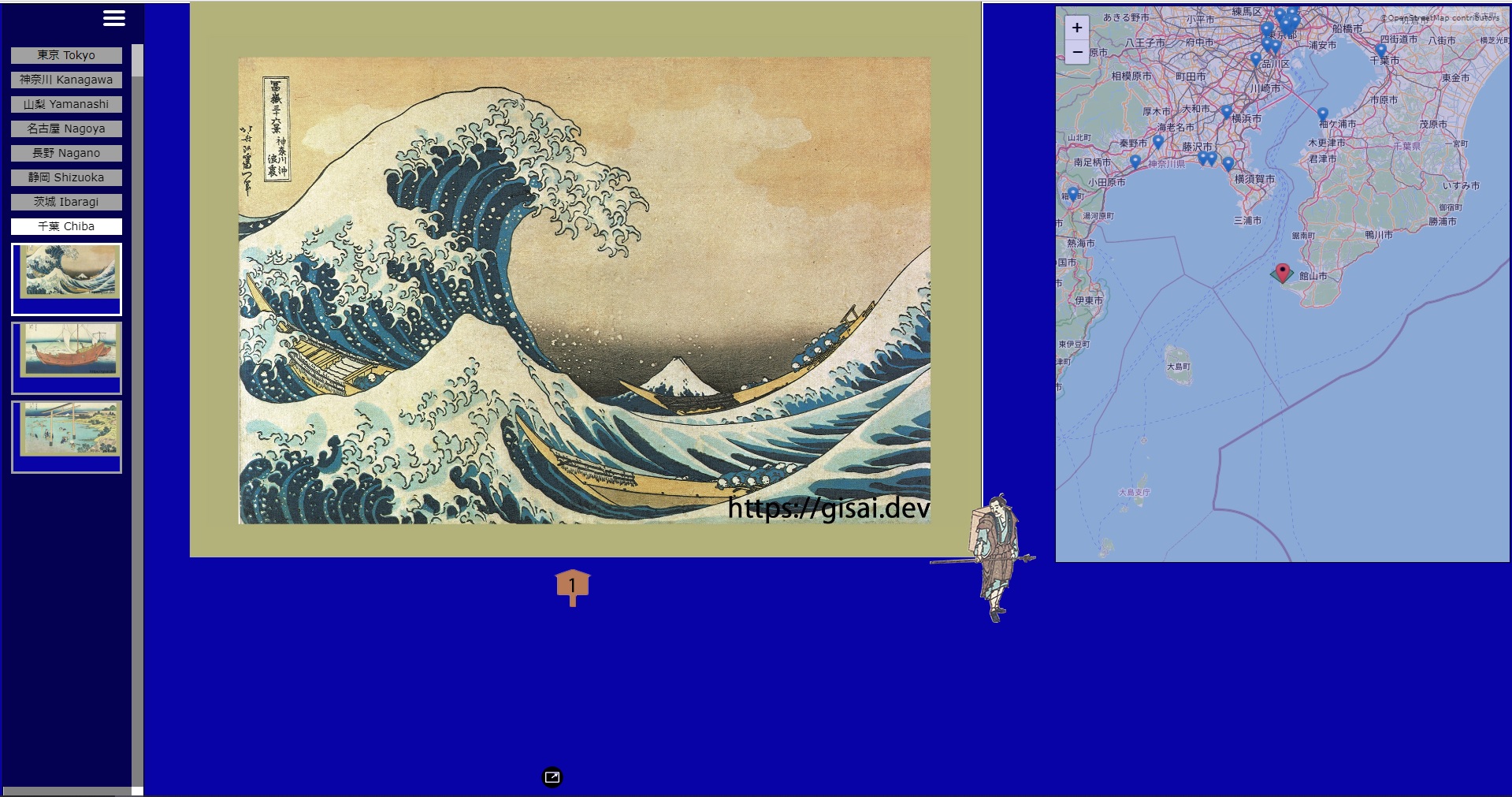
歌川広重は、1833年(天保2年)頃から、55枚からなる東海道五十三次を発表したとされています。東海道は、江戸の日本橋から京都の三条大橋とを結ぶ江戸時代の重要な交通路でした。東海道の宿場町、寺社仏閣、景観、人々の生活の様子を伝えるとともに、船舶輸送、漁業などの産業の発達を伝える貴重な浮世絵です。
Hiroshige published 55 Ukiyo-E introducing 53 post-towns along Tokaido since 1833, Tempo 2nd in Edo period. The Tokaido is the major route in Edo period connecting Nihon-bashi Bridge in Edo and Sanjyo-ohohashi Bridge in Kyoto. Tokaido 53 post-towns introduced the very important life styles in Edo period including the post-towns, shrines and temples, landscapes, ship transportations and fisheries, and so on.

六十余州名所図会(ろくじゅうよしゅうめいしょずえ)は、歌川広重の晩年の作と言われています。五畿七道(ごきななどう)の68の国と江戸から、それぞれの国の代表的な景観、寺社仏閣、奇岩を選び、69枚の浮世絵として残しています。移動手段の限られた時代ですから、広重自身も訪問できなかった地点については、北斎など他の絵師が残した資料をもとに描いたそうです。嘉永6年(1853年)から安政3年(1856年)の作品です。
Rokujyu-yoshu, Meisho-zue are the products of Hiroshige’s late years. Typical landscapes, shrines and temples, extraordinary rocks or mountains of 69 counties from 5 Ki area and 7 regions including Edo were introduced. It was difficult for Hiroshige to visit himself, while the transportation system was poor, Hiroshige referred to the pictures and materials printed by predecessors, e.g. Hokusai. The Ukiyo-es were produced during Kaei 6th (1853) to Ansei 3rd (1856).

葛飾北斎が1831年頃から、富士山の形が多様であることを示すために、連作として出版された浮世絵です。冨獄36景と題しながら、46景が発表されました。第1作の神奈川沖浪裏を見たフランスの音楽家であるドビュッシーが、「海」を作曲したとも言われています。
Hokusai Katsushika published since 1831 as a series of Ukiyo-e to entrain the various landscapes of Mt. Fuji. Although the title of this series named as Fugoku 36 kei scenes, Hokusai published 46 landscapes. It is said that the first publication called "Kanagawa-oki Nami-ura (Scene behind the waves off Kanagawa)" stimulated French composer Dobbisy to compose "La mer".